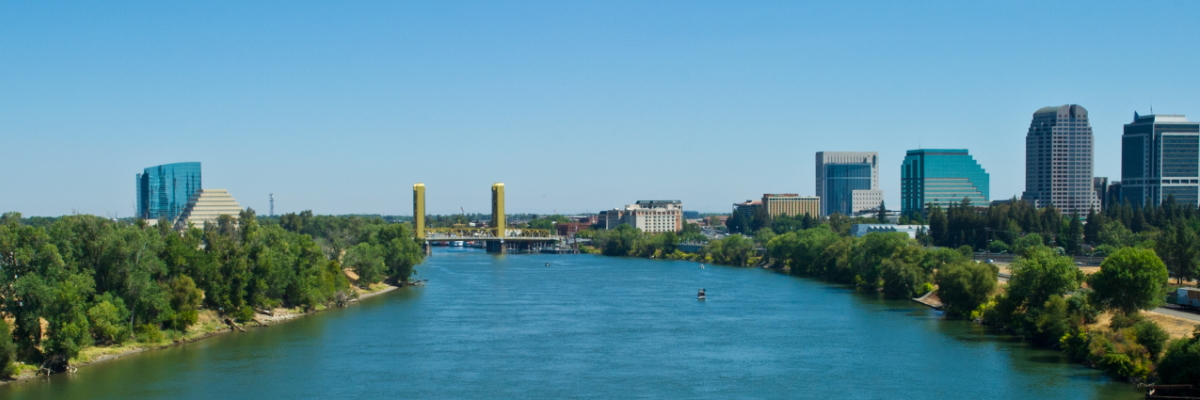
The staff reports and comment letters from our meeting are available on the Commission’s website. Executive Director Jennifer Lucchesi provided updates on the impressive, science-based, pioneering work staff is doing to prevent invasive species introductions and about two oil well abandonment projects underway in Santa Barbara County. The Executive Officer’s report with an array of program updates is available on the Commission’s website, and below are highlights from our meeting.
Summary
- Authorized 37 leases for the use of public lands and resources, 31 of which included terms to facilitate or enhance public access.
- Authorized eight lease amendments or assignments.
- Authorized three offshore geophysical and geological survey permits.
- Authorized the sale of school lands to CalTrans for a freeway widening project and a public utilities easement exchange to facilitate public access to the Honey Lake area in Lassen County.
Offshore Wind Energy and California’s Long-Term Renewable Energy Goals
Matt Koller, one of the Commission’s 2023 Sea Grant Fellows, presented a comprehensive briefing about staff’s work to facilitate offshore wind energy off the California coast, including two reports it recently released—the Port Readiness Plan and the Workforce Development Readiness Plan, and an application staff is processing for an offshore wind energy pilot project offshore California. The Port of Long Beach, as part of the update, briefed the Commission about its proposed terminal and staging and integration site to support offshore wind energy. The Humboldt Bay Harbor and Conservation District updated the Commission about its progress toward supporting offshore wind energy development, including its Offshore Wind Heavy Lift Multipurpose Marine Terminal Project. The briefing showcased how state agencies are aligned to meet California’s clean energy goals, the magnitude of the undertaking, and how many ports and range of jobs are necessary to meet the need and stand-up offshore wind energy in California.
Shoreline Adaptation and Nature-Based Solutions
Staff presented its new draft shoreline adaptation report that provides data to inform shoreline protection structure leases and management of coastal lands and public trust resources. The draft report details the ways climate change and development affect the shoreline, state tidelands, and the public uses they support, such as public access, recreation and tourism, habitat protection, commerce, navigation, and fishing. The draft report highlights the differences between built waterfronts, like ports and harbor districts, and the open coast and beaches. The report also emphasizes the importance of nature-based solutions to build resiliency and describes ways the Commission can encourage transitioning from conventional shoreline protection strategies to nature-based solutions where appropriate. Public outreach and stakeholder engagement are integral to this draft report, and today’s presentation launches a 60-day public comment period.
Wildlife and Aquatic Habitat Restoration
The Commission authorized a lease to support a habitat and wildlife restoration project in the Smith River, in Del Norte County, that would enhance the quality and quantity of off-channel habitat in the Smith River and the larger ecosystem. The project will restore and improve habitat in and connected to the river.
Renewable Fuels
The Commission amended a marine oil terminal lease in the Carquinez Strait to facilitate renewable fuel use and lessen dependence on petroleum-based fuel. The amended lease authorizes the leased lands to include the transfer of renewable fuels and their constituent components (i.e., feedstocks including plant oils and animal fats). The Commission’s action is integral to repurposing the Rodeo refinery in Contra Costa County into a renewable fuel facility, which will reduce greenhouse gas emissions and move California closer to carbon neutrality. The repurposed refinery is expected to start renewable fuel operations in 2024 and be the biggest renewable fuels production facility in the world.
Abandoned Vessel Removal
The Commission authorized staff to take title to and remove three abandoned commercial vessels in a Sacramento waterway known as Broad Slough and to enter into a settlement agreement with the vessel owner to clear all the commercial vessels from the Slough. The Commission also authorized staff to take title to and remove an abandoned fishing vessel in another Sacramento waterway that is known as Mayberry Slough. These abandoned vessel actions will remove navigation hazards, improve public access to California waterways, and improve their environmental health.
Future Meetings and Ways to Stay Informed
The Commission’s next meeting is on October 19 and will be a hybrid meeting with a virtual and in-person participation option. You can sign up on our website to receive updates about future meetings. Another great way to stay informed is to follow us on social media. You can view a webcast of the August meeting, and past meetings, on Cal-Span.

